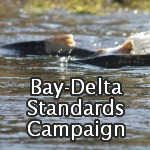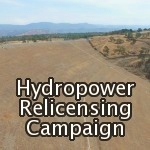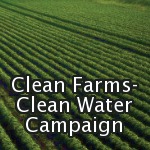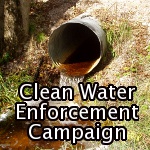On December 8th, 2023, the Department of Water Resources (DWR) issued the Final Environmental Impact Report (Final EIR) for its proposed Delta Conveyance Project, informally called the Delta tunnel.
During the required comment period following DWR’s release of its Draft Environmental Impact Report (Draft EIR), the public, native tribes, and non-governmental organizations submitted 700 letters and 7,000 comments. Many of these letters and comments raised substantive concerns about the Project’s potential negative impact on the environment and on communities who live within the Delta region and watersheds.
DWR claims that its Final EIR “responds to all substantive comments.” Chris Shutes, executive director of California Sportfishing Protection Alliance (CSPA) said DWR simply affirmed that its Draft EIR “was right on just about everything,” but was (perhaps unintentionally) candid in recognizing that “[i]ncreased flow through the Delta is not consistent with the project purpose” of the Delta tunnel.
Key Facts about the Delta Conveyance Project
The Delta Conveyance Project is a proposed 40-foot-diameter tunnel that would extend for approximately 45 miles. The proposed underground tunnel would take water from the Sacramento River before it enters the Delta. The water would then enter the State Water Project’s (SWP’s) 444-mile-long aqueduct to be exported for agricultural and urban use in central and southern California.
DWR’s Final EIR said that since the 1960s, when the SWP began, “regulatory changes intended to better protect fish and wildlife resources in the Delta “have reduced the amount of water that the SWP can export from the Delta to central and southern California.”
Delta smelt, for example, are an endemic species vital to the Delta’s ecosystem. In the 1980s the Delta smelt population declined by more than 80 percent. In 1993 Delta smelt were listed as threatened under federal and California endangered species acts. In 2007, this designation forced DWR to cease pumping water when hundreds of Delta smelt perished at south Delta pumps.
Governor Newsom and DWR assert that the Delta Conveyance Project will improve the SWP’s ability to export water to southern parts of the state in the face of climate change, droughts, potential earthquakes, and levee failures. They frame it as “modernizing” infrastructure. Delta defenders respond that the concept is 30-plus years old and uses modernist branding to justify the obsolete strategy of diverting still more water from an overtapped ecosystem.
Potential Impact to Fisheries
Dan Bacher reported that in 2022, the Department of Fish and Wildlife found zero Delta smelt in their surveys of the Delta. Bacher also reported that according to the CSPA, longfin smelt had declined by 99.96%, American shad by 67.9%, splittail by 100%, and threadfin shad by 95%.
The Center for Biological Diversity reported that “at least a dozen of the Delta’s original 29 indigenous fish species have been eliminated entirely or are currently threatened with extinction.”
Jon Rosenfeld, science director at San Francisco Baykeeper said the “Delta tunnel will divert excessive amounts of water from the Bay, and make matters worse for the fish and communities that depend on this ecosystem. The science clearly demonstrates that fish need increased river flows to survive, but state agencies are ignoring it.”
Rosenfeld went on to say “Because of excessive water diversions, the list of fish native to San Francisco Bay and its watershed that are verging on extinction continues to grow, and our fisheries are increasingly shut down.”
Department of Water Resources Responds to Comments
In ‘Common Responses,’ Volume Two of the Final EIR, DWR said that many commenters asserted that the Department’s Draft EIR, “should have included objectives to restore the Delta ecosystem, restore populations of specific species,” and “protect Delta water quality.”
DWR responded saying commenters had incorrectly conflated the goals of the Delta Conveyance Project with the goals of the Sacramento-San Joaquin Delta Reform Act of 2009. The Delta Reform Act of 2009 recognized that protecting the Delta’s ecosystem was of equal importance to securing a reliable water supply, a “coequal goal.”
DWR said that the underlying purpose of the Delta Conveyance Project was not to restore the Delta. DWR went on to say that it has the discretion to address the risks to SWP exports “without also restoring the Delta ecosystem” as long as sometime, somebody else takes care of the ecosystem.
More specifically, DWR said it has no responsibility to recommend flows through the Delta. This statement runs contrary to the purpose of producing a Final EIR for the Delta Conveyance Project. The purpose of producing a Final EIR for the Project is to inform the State Water Board and DWR of the Project’s potential negative impacts and the potential strategies to mitigate those impacts. A Final EIR for the Delta Conveyance Project that omits discussion of recommended flows through the Delta does not adequately support the decision making of the State Water Board and DWR.
Further, the Delta Reform Act explicitly requires: “Any order [by the State Board] approving a change in the point of diversion of the State Water Project or the federal Central Valley Project from the southern Delta to a point on the Sacramento River shall include appropriate Delta flow criteria…” [emphasis added]
An Alternative Path
To assure that the goal of restoring the Delta ecosystem is achieved, CSPA offers an alternative pathway to the overdevelopment of California’s water resources.
- Above all, bring water allocation into balance with actual supplies and reduce water exported from the Delta, in part by retiring drainage-impaired lands on the Westside of the San Joaquin Valley.
- Route freshwater through the Delta and increase outflow to restore and protect the estuary’s water quality and fisheries.
- Raise and strengthen existing Delta levees to withstand potential earthquakes, floods and rising sea levels for a fraction of the cost of peripheral conveyance.
- Increase reliance on local water supplies by investing equivalent dollars in reclamation, reuse and conservation.
For further discussion, see also the Revised Environmental Water Caucus Report.
The Next Steps
On December 21st, 2023, the Department of Water Resources published the Notice of Determination (NOD) for the Delta Conveyance Project. The publication of the NOD initiates the 30-day period in which the public can file litigation against the Project Plan and the Final EIR. CSPA will be one of the litigants.
In 2024, DWR will file a petition to change its water rights to include a new point of diversion in the north Delta. Later, the State Water Board will issue a notice of DWR’s petition and solicit protests. At least six months after protests are filed, the State Water Board will hold hearings on DWR’s request to change its water rights. Similar hearings in the past lasted more than two years.
The End Game
Proposals to build an alternative conveyance to export Sacramento River water to the southern parts of the state have come and gone for decades. Yet, every iteration of the Delta Conveyance Project has failed to reach the point of breaking ground.
In part, these failures have been due to the work of what Bill Jennings, former executive director of CSPA called the “oddest coalition” of fishing groups, environmental advocacy groups, Native American Tribes, environmental justice groups, Delta agriculturalists, and business people.
In a 2012 documentary produced by Restore the Delta, Jennings said these groups have come together to “fight for this estuary because it’s worth fighting for, it’s a special place.” “We all recognize that we’re going to survive together or we’re going to perish together. Our fates are intertwined.”









